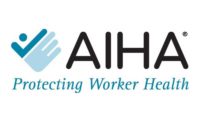A NIOSH Science Blog post
Effectiveness of new guidelines to prevent workplace hand-wrist MSDs

Research confirms that new guidelines to prevent worker hand, wrist, and elbow musculoskeletal disorders (MSDs) better protect workers. MSDs can be debilitating and costly workplace safety and health issues. In Washington state alone, direct costs for hand, wrist, and elbow MSD workers’ compensation claims accounted for over $2 billion and 11.8 million lost work days from 1999-2013.[1] Carpal tunnel syndrome (CTS) is one of the more costly diagnoses and accounted for about half of those costs associated with 28% of the claims.
In 2001, the American Conference of Governmental Industrial Hygienists (ACGIH®) published a voluntary threshold limit value (TLV®) for Hand Activity as a guideline to help prevent hand, wrist, and elbow MSDs (including CTS) among workers with hand intensive tasks.[2] A TLV® is a limit where workers can be repeatedly exposed without adverse health effects; if exceeded, the risk of MSD is elevated, and control measures, such as engineering or administrative controls, should be employed to reduce exposure. A lower threshold, the Action Limit, identifies a “moderate” risk exposure and should trigger increased monitoring or surveillance to ensure health. Recent studies from the US and Italy concluded that too many workers were still exposed to harmful hand activity levels under the 2001 limits. The ACGIH® subsequently revised the TLV® for Hand Activity in 2018. A new study published in the Journal of Occupational and Environmental Hygiene summarizes the effect of applying the 2018 TLV® vs. the 2001 TLV®.[3]
CTS, an MSD caused by frequent, forceful hand exertions, is one of the most common and costly MSDs.[4] In 2013 US dollars, the estimated median medical care and total direct workers’ compensation costs of CTS were $10,000 and $18,000,[1] amounts that do not include indirect disability and other social costs[5]. Importantly, CTS has the second highest rate of opioid prescribing by injury type among workers treated under workers compensation.[6] Treatment of work-related disorders with prescription opioids has contributed to the current epidemic of opioid-related deaths,[7] with higher rates seen in industries with the highest injury rates.[8]
For this study, researchers analyzed exposure and incident CTS case data from a large study representing a diverse workforce in dozens of occupations and industries in the U.S. The goal was to evaluate how effective the recommended 2001 and 2018 TLV® and Action Limits could have been at preventing CTS if workers’ exposures had been reduced. The study found that the 2018 revision of the TLV® better protects workers from CTS. The results showed that eliminating exposure above the TLV® for all workers would have prevented 21 cases of CTS (11% of all cases in the cohort) using the 2001 limit, and 47 cases (25% of cases) using the 2018 TLV®. For both the 2001 and 2018 recommendations, further reductions would be achieved by eliminating exposures above the Action Limit.
The 2018 TLV® is a proven, easy-to-use tool for reducing risk of CTS. The TLV® can also be used for other hand and wrist conditions in addition to CTS. Practitioners may not realize that the method for applying 2018 TLV® and Action Limit has changed substantially compared to the 2001 version. There are several methods available for practitioners to estimate the Hand Activity Level (HAL). The 2018 TLV® now works similar to a familiar exposure assessment tool, the NIOSH Lifting Equation. Basically, the ratio of observed force to recommended force should be < 1.0 for a specific HAL score. The TLV® formulas are used to calculate a recommended force limit for any HAL score. In contrast, for the 2001 TLV®, practitioners categorized the ratio of HAL to normalized peak force into three distinct ranges: 1) below the Action Limit, 2) above the Action Limit but below the TLV®, or 3) at or above the TLV®. The NIOSH Lifting Equation is one of the most commonly used ergonomic assessment tools. Perhaps the new, familiar format of the TLV® for Hand Activity will improve adoption of this relatively simple, effective method.
If you have used the new TLV® for Hand Activity, please share your experiences in the comment section below. Public health professionals should work to ensure that these new guidelines are utilized and encourage employers to reduce hand intensive exposures to prevent CTS and other musculoskeletal disorders. A substantial number of workers in this study were exposed above both the 2001 and 2018 TLV®s recommended by ACGIH®. This indicates an ongoing need to reduce exposures to prevent CTS and other upper extremity MSDs among workers in hand-intensive jobs.
References
[1] Marcum J, Adams D. Work-related musculoskeletal disorder surveillance using the Washington state workers’ compensation system: Recent declines and patterns by industry, 1999–2013. Am. J. Industr. Med. 60:457-471, 2017.
[2] ACGIH: Threshold Limit Values for Chemical Substances and Physical Agents and Biological Exposure Indices. Cincinnati, OH: American Conference of Governmental Industrial Hygienists, 2001.
[3] Yung M, Dale AM, Kapellusch J, Bao S, Harris-Adamson C, Meyers AR, Hegmann KT, Rempel D, Evanoff BA. Modeling the Effect of the 2018 Revised ACGIH® Hand Activity Threshold Limit Value® (TLV) at Reducing Risk for Carpal Tunnel Syndrome. Journal of Occupational and Environmental Hygiene. 19 (6): 628–633, 2019. doi 10.1080/15459624.2019.1640366
[4] Foley, M., B. Silverstein, and N. Polissar: The economic burden of carpal tunnel syndrome: Long-term earnings of CTS claimants in Washington State. Am. J. Industr. Med. 50(3):155–172, 2007.
[5] Marcum J, Adams D. Work-related musculoskeletal disorder surveillance using the Washington state workers’ compensation system: Recent declines and patterns by industry, 1999–2013. Am. J. Industr. Med. 60:457–471, 2017.
[6] Thumula, V., and T.-C. Liu: Correlates of Opioid Dispensing. Cambridge, MA: Workers Compensation Research Institute, 2018.
[7] Cheng, M., B. Sauer, E. Johnson, C. Porucznik, and K. Hegmann: Comparison of opioid-related deaths by work-related injury. Am J. Industr. Med. 56(3):308–316, 2013.
[8] Massachusetts Department of Public Health, Bureau of Substance Addiction Services, Injury Surveillance Program, and Office of Special Analytic Projects: “Opioid-related Overdose Deaths in Massachusetts by Industry and Occupation, 2011–2015”, 2018.
Looking for a reprint of this article?
From high-res PDFs to custom plaques, order your copy today!








